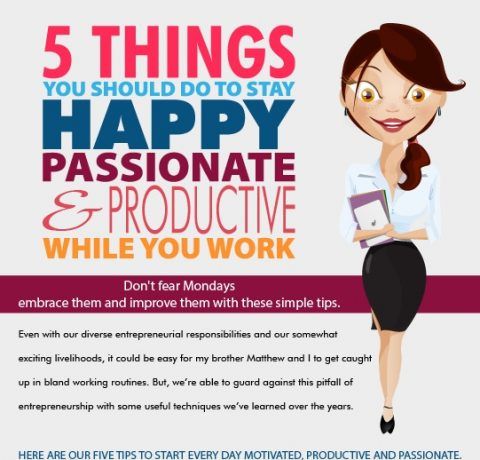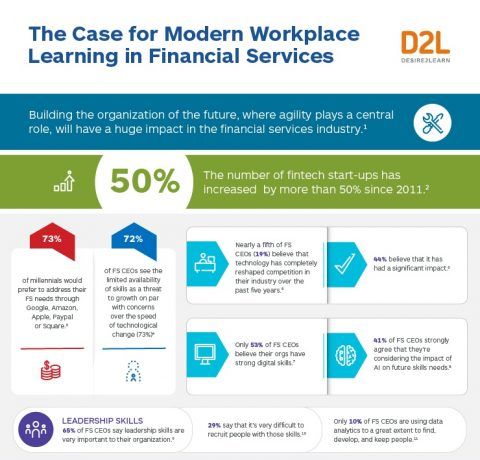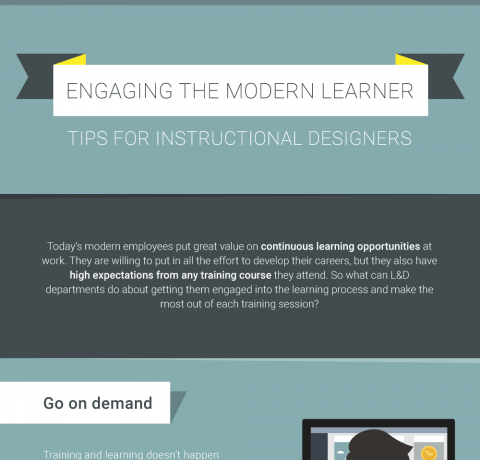The Future of Lifelong Learning Infographic
Not that long ago, our formal education ended once we started working. But today, lifelong learning is sweeping the globe. The Future of Lifelong Learning Infographic presents the recent lifelong learning explosion, provides a brief overview of lifelong learning organizations and initiatives and lists some of the societal benefits we can expect to see from lifelong learning in the future.
What is Lifelong Learning?
Lifelong learning is the constant acquisition of knowledge and skills throughout a lifetime.
Examples of Lifelong Learning
- English as a second language training
- Basic skills education
- College or university degree programs
- Vocational or technical programs
- Apprenticeship programs
- Work- related courses
- Personal interest courses
The Lifelong Learning Explosion
- What's fueling the increased interest in lifelong learning?
- Changing demographics
- Shift in national policy
- Increased corporate investment
- Workers needing new skills
A Sample of Lifelong Learning Organizations and Initiatives
- In 2008, Khan Academy, a nonprofit tutoring library, is founded in the infancy of massive open online courses (MOOCs).
- In 2010, Udemy launches at the cusp of the boom in MOOCs.
- In 2011, two Stanford University professors start Coursera as MOOCs begin a meteoric rise. Meanwhile Skillshare offers paid enrollment for a wide range of instruction.
- In 2012, Harvard University and the Massachusetts Institute of Technology form edX. Udacity partners with Google, Microsoft and other technology leaders. 2tor becomes 2U, raises $96 million in venture capital and announces its first undergraduate courses.
- In 2014, million people have taken a Codecademy course.
Lifelong learning takes off in transition economies as well
- 1995 - 2002: The number of tertiary education institutions grows more than 70% in Brazil.
- 1995 - 1999: China creates 500 new higher education institutions.
- 2014: Private business schools thrive in Eastern Europe but were unheard of a decade ago.
Lifelong Learning Today
- Aspiration: More adults are interested in continuing education. 2,625 is the number of MOOCs worldwide as of June 2014, a 327% increase in one year
- Access: More offerings, including workplace training. Money corporations spent on training in 2002 $28 billion
- Career Pathways: Students implement learning in real-world situations. There were 6.6 million part time undergraduate students in degree-granting postsecondary institutions in 2012
- Affordability: Digital innovation reduces cost. $7,000 is the cost of an online master's degree in
computer science from the Georgia Institute of Technology through Udacity, a savings of 80 percent over the cost of the on-campus degree
The Benefits of Lifelong Learning
1. Stronger Communities
- 43% of people age 25 or older with at least a bachelor's degree volunteered in 2012.
- 17% of people age 25 or older with a high school diploma volunteered in 2012.
2. Motivated Electorate
- 77% of people with a bachelor's degree voted in the 2008 presidential election
- 54.9% of people with a high school diploma voted in the 2008 presidential election
3. Higher Income and Greater Productivity
- 10%: The amount an extra year of schooling for adults in developed countries raises incomes
- 20%: How much an extra year of schooling increases adult income in poor countries
- 5-15%: Boost in per-worker output with a one year increase in average years of schooling for a country’s labor force







You can adjust your cookie preferences here.